1. Enhances Employee Experience and Engagement: Digitization improves user experience, facilitates peer recognition, and makes recognition instant and timely, fostering higher engagement and motivation.
2. Reduces Administrative Effort and Costs: Automates manual processes, reducing administrative burdens and costs while enhancing transparency and fairness.
3. Increases Accessibility and Visibility: Provides access to remotely working employees and integrates with internal and social platforms for greater recognition visibility.
4. Improves Alignment and Flexibility: Links recognition to performance metrics and goals and allows easy adjustments to align with changing business needs.
Employee recognition is one of the critical HR strategies for any organization today. Hence, it is unsurprising that an organization has already digitized or is looking to digitize its employee recognition program to make it more efficient and effective.
The digitization of key business processes has become necessary for organizations to stay competitive and progressive in rapidly changing modern times.
According to a recent industry report, 70% of organizations, including 38% of traditional businesses have already adopted a digital transformation strategy.
Let’s look at the key reasons for an organization to digitize its employee recognition program:
1. Enhances Employee Experience
2. Reduces Administrative Operations and Costs
3. Makes it Easier to Link Recognition to Goals and Performance
4. Makes Recognition Instant and Timely
5. Facilitates Peer-to-Peer Recognition
6. Creates Greater Social Visibility
7. Makes it Accessible for Remotely Working Employees including Field Staff
8. Makes the Process More Transparent and Fair
9. Provides Reminders and Nudges to Managers
10. Enables a Single View of the Entire Program
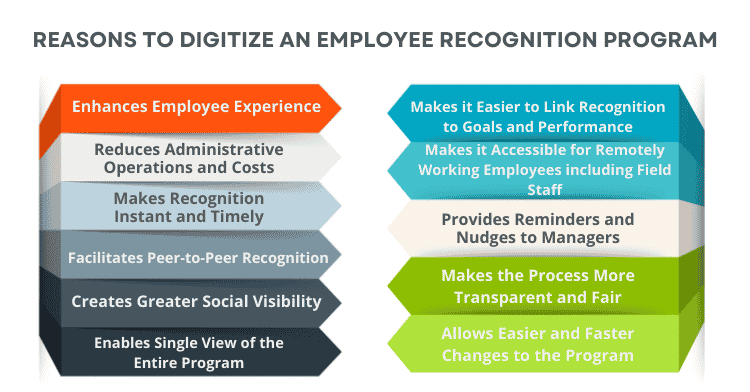
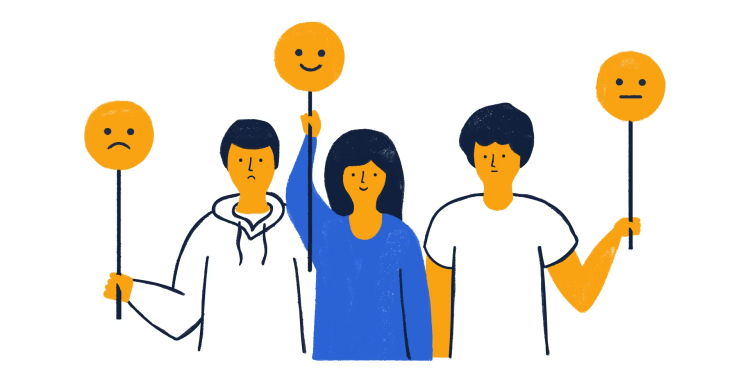
With Gen Z and millennials constituting most of the workforce, a technology-enabled employee recognition program is bound to enhance employee experience.
For a generation of employees who are completely comfortable with e-commerce, social media, and mobile apps, digitization of the employee recognition program is almost like a no-brainer.
Digitization can enhance the employee experience in many ways, leading to greater employee participation and engagement and higher motivation, performance, and productivity.

A digital employee recognition platform can minimize the need for manual processes such as creating Excel spreadsheets, sending emails, and following up with multiple internal teams and external parties.
Digitization can enable automation of processes based on predefined workflows.
The reduction in administrative operations involved in running an employee recognition program can help free up time and resources of the HR Team for other value-added activities.
Digitization of the program can also help minimize errors and delays, leading to further cost savings.
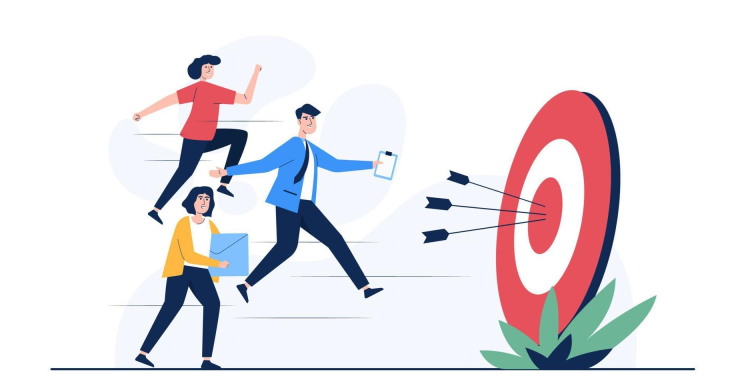
The organization can easily integrate the digital employee recognition platform with other work platforms. Integrating with other systems such as CRM, project management, performance management, etc., the recognition process can be closely aligned with employee performance.
The organization can integrate employee performance at work, measured in terms of Key Performance Indicators (KPIs) with the employee recognition platform, and can trigger recognition based on predefined criteria.
This can help the organization align the employee recognition program with the employees’ actual performance.
Also, read 5 Best Ways to Recognize Top Performers
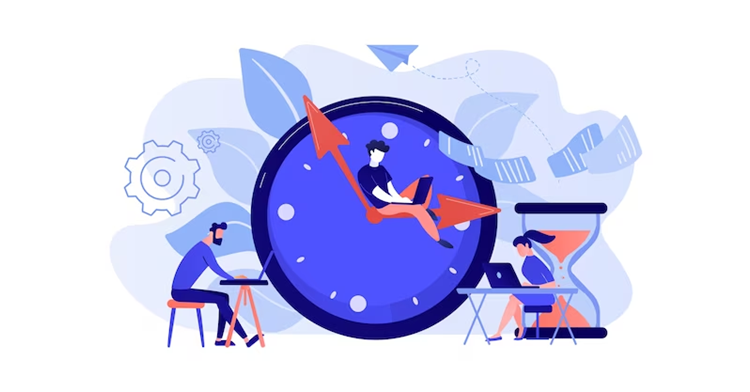
Traditional employee recognition systems are not geared up for instant recognition. Delays in recognizing an employee’s achievements reduce the impact of recognition itself.
Digitization of the recognition process makes it easier for managers and co-workers to offer instant and spot recognition as and when the employee achieves something significant or exhibits a desirable behavior.
Timely recognition increases the effectiveness of the recognition process as compared to a traditional system.
Also, read Frequency of Employee Recognition Matters for Organizations

Peer-to-peer recognition has become one of the most significant drivers for enhancing employee engagement and motivation.
It can be challenging for organizations to implement peer-to-peer recognition through physical appreciation cards or appreciation boards.
A digital employee recognition platform can make the process of peer-to-peer recognition very simple.
Making this process easy for co-workers to appreciate each other encourages more employees to participate in the program and helps build a strong culture of appreciation within the organization.
Also, read Employee Recognition Program Can Drive Cultural Change
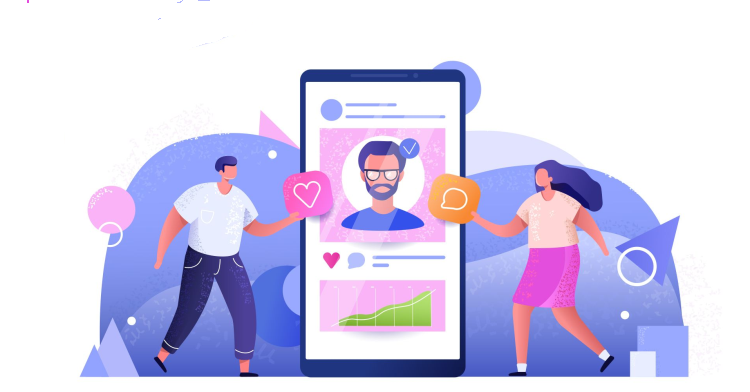
A digital employee recognition platform enables the program to garner greater visibility within and possibly outside the organization.
The platform can integrate with internal collaboration tools such as Microsoft Teams, Slack, or Workplace. It can also integrate with external social media platforms such as LinkedIn, Facebook, and Twitter.
Employees can congratulate the recipients of recognition on the employee recognition platform by commenting and liking their posts, giving organization-wide social recognition to the winners.
Greater visibility can be obtained through integration with other internal and external platforms.

Recognizing remotely working employees such as field staff is a big challenge for traditional employee recognition programs.
The massive shift towards remote working fueled by the pandemic has increased this challenge manifold.
Also, a digital employee recognition platform provides an easy way for remotely working employees to participate in the program.
So, managers and co-workers could recognize team members, receive recognition, congratulate others, and even redeem their rewards digitally.
Hence, it is one of the most compelling reasons for organizations to digitize the employee recognition program.

A digital employee recognition program makes the entire process completely transparent – the criteria, the nominations, and the winners.
Hence, employees have visibility into the entire process, making it more genuine and trustworthy in their minds.
Limits on the numbers and frequency set in the platform can prevent the same employees from getting nominated multiple times and ensure greater fairness in the overall recognition system.

Automated reminders and nudges to managers can enable timely and regular recognition of team members and help in building an overall culture of appreciation in the organization.
This is hard to replicate in a traditional recognition system without too much manual effort and overheads.

A digital employee recognition program provides the HR team and management with a bird’s eye view of the program at their fingertips.
They can track the critical program metrics in real-time and take the necessary actions.
Digital employee recognition platforms include dashboards, reports, and analytics that let the program managers understand the health of the program at any given point in time.
They can take timely actions based on these metrics and trends.
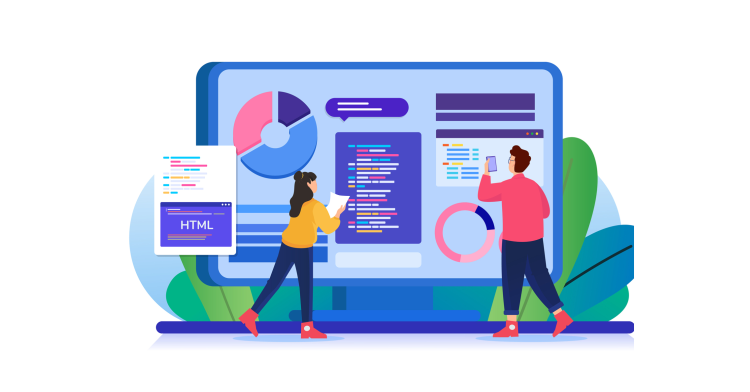
An employee recognition program needs to stand the test of time.
Hence, the program must be modified and enhanced over time to keep it in sync with changes in the organization’s business objectives and workforce expectations.
A digital employee recognition program makes it much easier and faster to implement changes such as adding new categories of recognition and changing the existing workflows or criteria for recognition.
However, in traditional recognition systems, making such changes can be pretty cumbersome and time-consuming.
Also read Employee Recognition: The Devil is in the Execution
There are many compelling business reasons why an organization should digitize its employee recognition program and make it more efficient and effective.
A digital employee recognition program can drive a much higher level of employee engagement and motivation as compared to a traditional offline system.

Lead author: Sagar Chaudhuri, the Co-Founder and CEO of HiFives. He is an HR Tech Evangelist with over 25 years of corporate and entrepreneurship experience. In the past, Sagar has worked in leadership roles with companies such as Genpact, Infosys, and ICICI Bank. He has an engineering degree from IIT Kharagpur and an MBA from IIM Lucknow. Connect on LinkedIn
To stay updated on the latest HiFives blogs, follow us on Twitter (@MyHiFives)